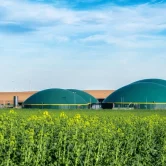Biomass is emerging as a cornerstone of the European Union’s push toward a cleaner, more sustainable energy system. Unlike intermittent sources such as solar or wind, biomass provides a stable and controllable energy supply, while simultaneously promoting rural development and enabling the valorization of waste streams. As the EU strives to meet the ambitious climate goals outlined in the European Green Deal and the Renewable Energy Directive (RED II), understanding how biomass fits into this transition is more important than ever.
The European Union has established a robust regulatory framework to guide biomass production, trade, and consumption. This framework is designed to maximize the benefits of biomass while minimizing its potential environmental impacts. Biomass already accounts for roughly 60% of the EU’s renewable energy consumption, making it the most significant renewable source across the region. Yet, its widespread use has raised important questions around sustainability, carbon neutrality, and alignment with long-term decarbonization objectives.
The Renewable Energy Directive (RED) provides the backbone of EU policy on bioenergy. Since its first iteration, RED has progressively tightened sustainability requirements, from the initial mandate of a 20% renewable energy share to RED II’s explicit greenhouse gas emission reduction targets and sustainability certifications for large-scale biomass facilities. RED III further reinforces these measures, emphasizing the use of residues, waste, and secondary products while limiting direct forest biomass harvesting, in line with the EU’s cascading principle for resource efficiency.
Complementing these energy-specific regulations, the Land Use, Land-Use Change, and Forestry (LULUCF) Regulation ensures that biomass production does not compromise Europe’s carbon sink capabilities. Forest-derived biomass must be managed carefully to avoid negative impacts on carbon accounting and ecosystem integrity. This regulation highlights the need for balance between energy production and climate obligations, particularly in forest-rich member states.
The European Green Deal and the Fit for 55 package underscore the dual role of biomass: it is a critical tool for decarbonization, but it must also protect biodiversity, soil health, and food security. National-level policies allow member states to tailor implementation strategies, subsidies, and sustainability requirements, reflecting local conditions while adhering to EU-wide objectives.
By navigating these complex policies and sustainability standards, the EU aims to ensure that biomass delivers on its promise as a renewable energy solution—supporting climate targets, rural economies, and the responsible use of natural resources. The continued evolution of EU directives signals a commitment to making biomass both a reliable energy source and a model of sustainable innovation.




